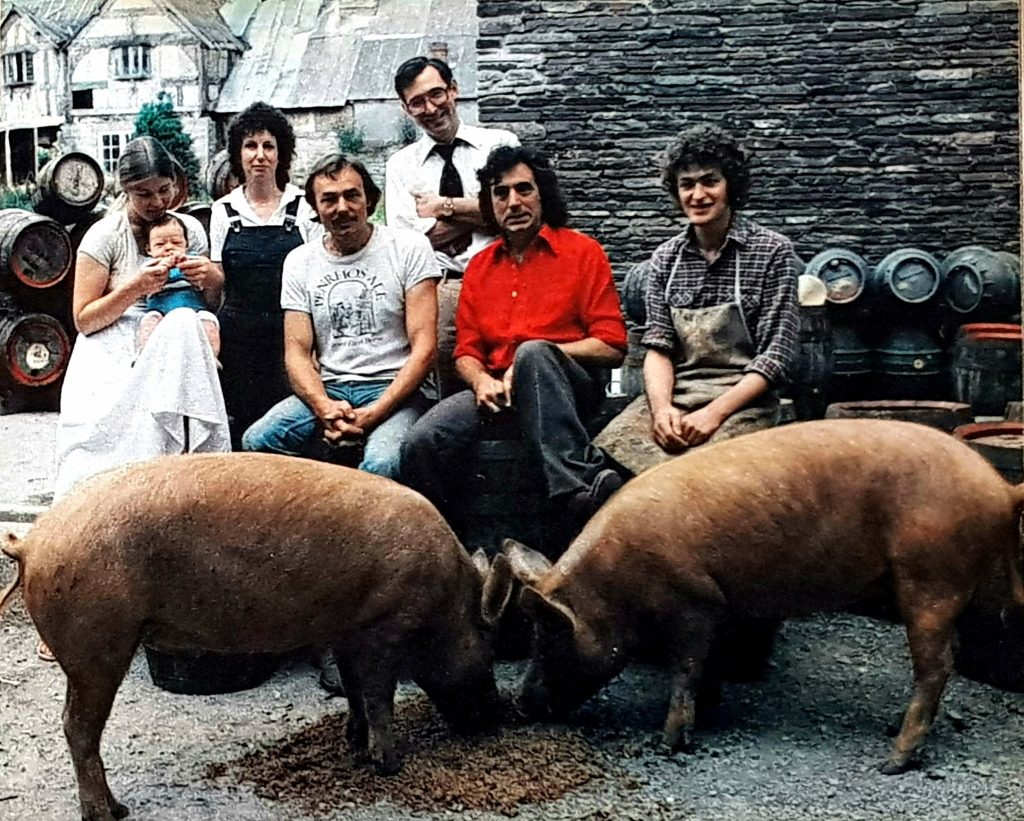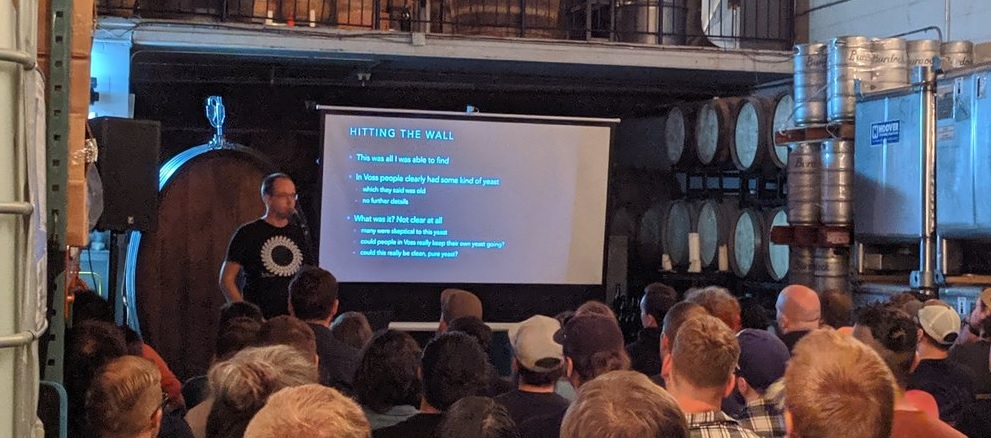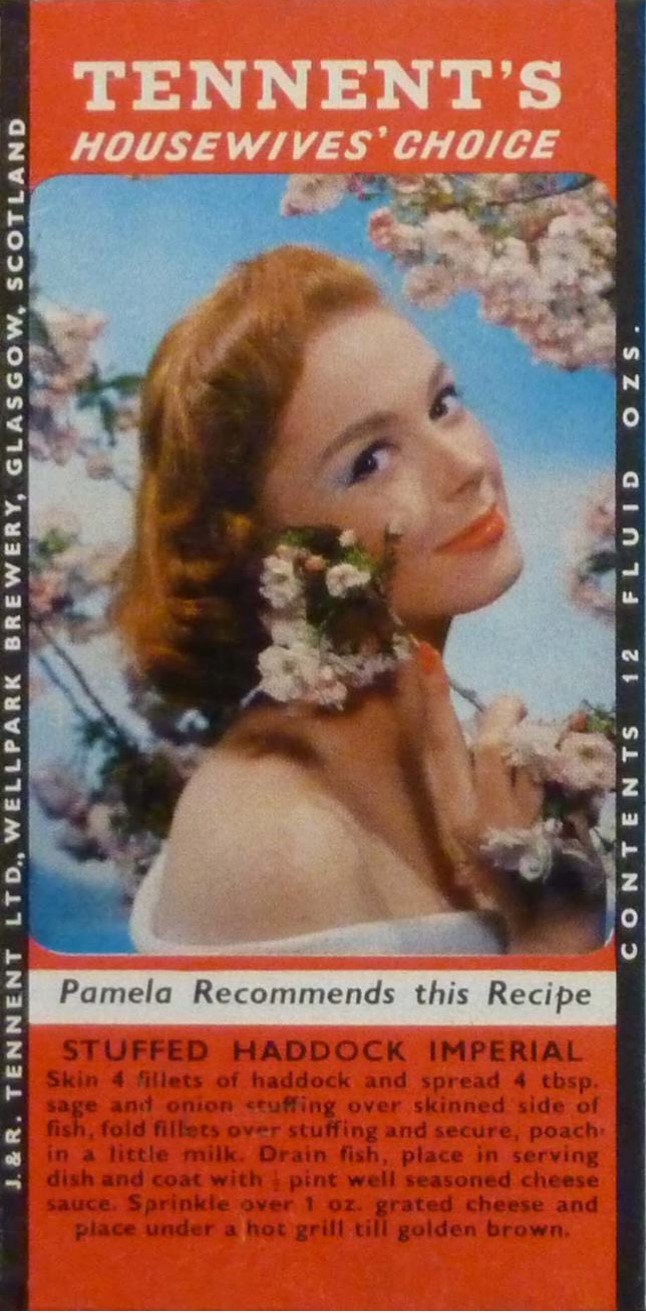 A quieter week. As I napped, I saw this image passing by on the internets screen this week and grabbed it for posterity. One reason it struck me was that it passed by soon after I read somewhere how craft beer was a response to 60 or 70 years of light pilsner. Hmm… that’s an image of Ballantine ale being delivered in downtown New York in the 1950s. When the ale maker was the third biggest brewer in the U.S. of A.*
A quieter week. As I napped, I saw this image passing by on the internets screen this week and grabbed it for posterity. One reason it struck me was that it passed by soon after I read somewhere how craft beer was a response to 60 or 70 years of light pilsner. Hmm… that’s an image of Ballantine ale being delivered in downtown New York in the 1950s. When the ale maker was the third biggest brewer in the U.S. of A.*
It slightly boggles the brain bucket sometimes how limited the recollection of the recent past is. A cursory reading of 1970s and 80s interviews with micro brewers makes clear that they were positively and opportunistically cloning existing beers, especially locally available imports but also beers like Ballantine ale which still existed or were recalled in very recent memory. And catching up with the good food revolution of the 1960s and 70s. Fine followers all. Sure, industrial pilsner was part of it all but, even then, aggregation and lightening the light macro lager continued parallel to the first micro wave that took off in the ’80s and into the ’90s. Anyway, it’s a lovely photo reminding us of the twenty years of maybe a perhaps arguable US ale gap. Here’s some info on the Hudson Theatre.
In the U.K. o’ G.B. etc., the upset centers this week on the new Covid-19 measures and especially the new early 10 pm pub closing order. The B and the B summed up the feeling that someone somewhere is flailing about this way:
What would help is if the Government would get into the habit of providing evidence and rationale for policy decisions. As it is, this latest feels like what you get when half the cabinet wants to close pubs, the other half doesn’t, so you agree to meet halfway.
Stonch has finally been given his proper place as a spokesperson, being interviewed on Times Radio, opining that pubs got off lightly with these pre-announced changes, that it could have been full closure. His statement that the table service requirement and 10pm closing should not inhibit sensible trading in safe venues was at least a hopeful one. These things have been all over the place in all jurisdictions so it appears to be as much as what approach to the rules is taken as it is what role you play in the system: publican, staff, drinker. Does it work best if the place is small? Cookie has posted a post and suggested a suggestion:
Let’s adopt British Timbo Time. It’s simple. We all set our watches an hour earlier. We get Timbo to turn the smooth bitter taps on an hour earlier. Time is what we say it is. Boris may say it is 10pm. We know it is 11pm BTT. Why should we let the government dictate when it is 10pm? It is 10pm when we want it to be 10pm. If enough of us decide that right now this minute, it a 6am then by hell it is 6am. British Timbo Time. By the people, for the people!
Elsewhere, we are told that the next months coming could be disastrous for all sorts of breweries – perhaps depending where you live and what sort of economic policies are being followed as, for example, in the US:
A report commissioned by John Dunham Associates claims that 651,000 jobs in brewing, distributing and retail “will be lost by the end of the year”, while overall beer sales could fall by as much as US$22 billion by the end of 2020. Brewing roles are expected to be the hardest hit, with the report warning 3,600 brewers could lose their jobs by year end. “The beer industry has seen a dramatic decline both in sales and jobs that rely on our nation’s most popular alcohol beverage,” said Jim McGreevy, president and CEO of the Beer Institute.
Perhaps as illustration of candidates, this is classic – but, still, pretty sure the owner was not laughing. How much financial loss does a stacked pallet of cans represent? In much more dangerous occupational health and safety news…
A barman who had his arm blown off in a horror beer keg explosion will receive a compensation payout after reaching an out of court settlement with a former employer. Jye Parker, 29, was seeking more than $2million in damages from Bar Beach Bowling Club in Newcastle, two hours north of Sydney, claiming the venue breached its duty of care. He was helping a friend set up and test a portable beer keg system in October 2014 when it suddenly exploded and changed his life forever.
Yikes. Well, yikes is a bit of an understatement, isn’t it.
Note: only about half his weight.
Quitting blogging. Haven’t we all dreamed of being released from the pinching shackle. Me myself, I passed my 17 and a halfth anniversary this month of beating the pick axe against the face of the blogs.** Anyway, “Life After Football” is packing it in but has gifted us all with a list*** of his favourite blogs of a similar sort of interest:
…there is still plenty to cheer as I can recommend all of the following blogs at the bottom of this post, as they are a terrific read. If you can’t find something beer or booze related in this smorgasbord then you really don’t like reading about beer or pubs!
The Beer Nut is not quitting and his personal travel ban has him seeking out the what remains of the real and the well thought out:
Pleasingly, it does taste of blueberries, fresh and juicy and real. The hibiscus brings the red fruit too, of course, and it’s quite fun to explore the flavours. This is helped by the beer being neither too sweet nor too tart, the sourness level just enough to make it invigorating without trying to be a full-on enamel-stripper.
Conversely, while I agree with Jordan about what might be considered the amateur hour of micro branding, I also have little interest in the excessive time and money spent on artsy craft packaging and other surfaces where this era’s branding is place – but if you disagree with me soon there will be a book for those with an interest… though perhaps one with a wee bit of confirmation bias behind it. Speaking of which, I’m pretty sure that beer Advent calendars have been around for a while. But what is old is apparently new again to the Daily Record.
Speaking of which, it is good to see that international brewing corp. BrewDog hasn’t got full rights to appropriate “Elvis” as it has “Punk”:
…the brewer initially lost its battle to trademark the beer in the UK, but later it was overturned and Brewdog was given permission to trademark ‘Brewdog Elvis Juice’, but not ‘Elvis Juice’. However it has come unstuck in its latest attempt to trademark the beer in Europe. EPE first opposed Brewdog’s European application back in 2018. Brewdog launched an appeal in the following year which has now been dismissed. In the case documents, the EU Intellectual Property Office ruled: “It is clear that the applicant’s submission based on the peaceful coexistence of the marks cannot succeed. No evidence actually demonstrating such peaceful existence on the pertinent market has been shown. In short…there exists a likelihood of confusion… A likelihood of confusion for only part of the relevant public of the European Union is sufficient to reject the contested application.”
Ontario Beer Store good news. Ontario Beer Store not so good news.
In far worse news, we knew this in general terms but I missed this Amnesty International press release which dives into greater detail related to the connections between the military of Myanmar and many industries including craft brewers:
Pan-Pacific announced that it is terminating its business partnership with MEHL in the wake of Amnesty’s findings and the publication of the UN Fact-Finding Mission report of 2019. KBZ and Kirin have stated they are reviewing their relationship with MEHL, while others did not provide such commitments or did not respond at all. Full copies of responses can be found in Annex I of the report. These companies all partner with MEHL in operations inside Myanmar. However, a few have global reach. Kirin is one of the world’s largest beer brewers, and its drinks, such as Kirin, San Miguel, Lion and Fat Tire are sold in bars and shops all over the world.
Govern yourselves accordingly.
And that is it! Enjoy these last few warm days – and days that you may still be allowed out of the house – and remember there’s Boak and Bailey most Saturdays, plus more at the OCBG Podcast on Tuesdays (where Jordan shits on the second wave) and sometimes on a Friday posts at The Fizz as well. And sign up for Katie’s weekly newsletter, too. Plus the venerable Full Pint podcast. And Fermentation Radio with Emma Inch. There’s the AfroBeerChick podcast as well! And have a look at Brewsround‘s take on the beer writing of the week. Not to mention Cabin Fever. And Ben has finally gone all 2009 and joined in with his own podcast, Beer and Badword (and this week rants about why beer awards are stupid.) . And BeerEdge, too.
*Get out your Tremblay and Tremblay. Economists always make the best contemporary brewing historians.
**Never enough mining analogies. As good as any forced if entertaining argument. Zima. Sweet Lambics. Coolers. Alcopops of one sort or another have been around for decades under one label or another. Heck, there was Lemon Beer in Schenectady in the 1830s. Marketing works.
***What the heck… here’s the list… Pub Curmudgeon, Martin Taylor, Colston Crawford, Pubmeister, Pete Allen, West Midlands Explorer, Shove It, Chuck It, Toss It, The Wickingman, Garden Hermit, Citra, Paul Bailey, BRAPA, Jane Stuart, Real Ale Real Music, The Beertonian, Mappiman’s Real Ale Walks, Tandleman, Food, Travel, Football, Beer is the best, The Travelling Barman, The Cask Connoisseur.






 So, if I was going to write about all the interesting things I read this week, I need to first acknowledge all the uninteresting things I read this week but then not write about those things so that I can focus on writing about all the interesting things. [Thanks, folk who are keeping good beer stuff so dull!] Now, one of the most interesting things I read this week were the labels by the apples in this
So, if I was going to write about all the interesting things I read this week, I need to first acknowledge all the uninteresting things I read this week but then not write about those things so that I can focus on writing about all the interesting things. [Thanks, folk who are keeping good beer stuff so dull!] Now, one of the most interesting things I read this week were the labels by the apples in this 


 Did someone say England? The BBC Archives shared
Did someone say England? The BBC Archives shared 



